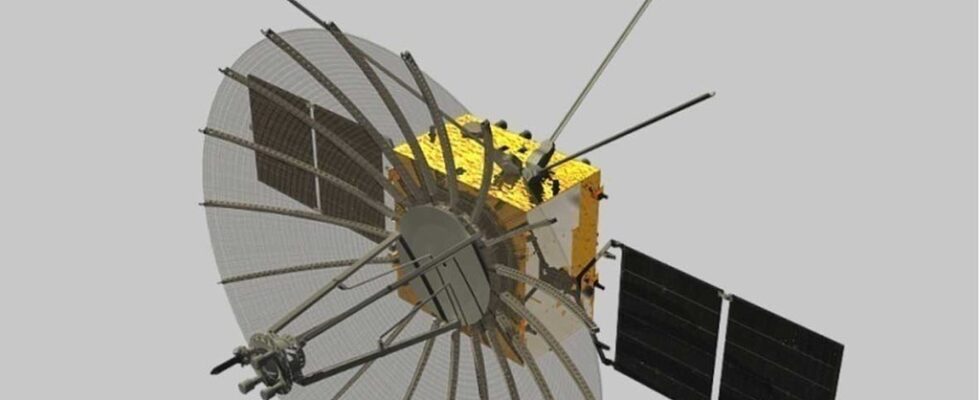Queqiao, which literally translates to “bridge of magpies”, refers to a Chinese folktale. A couple of lovers meet once a year when a flock of magpies forms above them like a bridge or the Milky Way in the starry sky. More down-to-earth, Queqiao is also the name of a small Chinese satellite weighing 425 kg which serves the Middle Kingdom in its conquest of the moon.
Launched in May 2018, Queqiao, the first of its name, served as a communications relay for the Chinese rover during the Chang’e 4 mission. It was evolving on the far side of the Moon and therefore could not communicate directly with Earth. The Space.com site tells us that China is preparing to acquire a new lunar satellite to relay two-way communications to and from the Moon.
Serve as a relay to a permanent base
Queqiao 2 will be launched in early 2024 to support China’s upcoming lunar missions. Chang’e 6 aims to collect the very first samples from the far side of the Moon. The new satellite also serves as a communication relay for the Chang’e 7 and Chang’e 8 moon landing operations, scheduled for 2026 and 2028.
These last two missions must validate the technical possibility of establishing a camp on the Moon such as exploiting mining resources or using 3D printing. They will be based in the South Pole, where reserves of water ice present in the craters are of strategic interest in the perspective of long-duration missions.
The launch of Queqiao 2 is accompanied by the takeoff of a pair of smaller telecommunications satellites, Tiandu 1 and Tiandu 2. Eventually, China plans to form a constellation of satellites around the Moon in order to provide services of communication and navigation to teams operating on the lunar surface.
Who will be the first to walk on the Moon again?
Within the next decade, China and Russia plan to set up a permanent base on Earth’s natural satellite under the International Lunar Research Station (ILRS) program. A program that echoes the Western Artemis project launched by NASA and of which the European Space Agency (ESA) is a stakeholder.
Launched under the presidency of Donald Trump, Artemis aims for a return of man to the Moon in 2025, he who has not set foot on lunar soil since 1972. Placed in orbit around the Moon, the Lunar Orbital Platform space station -Gateway (LOP-G) will serve as a relay between the Earth and the surface of the Moon. The station’s two modules are due to launch in 2024, with SpaceX’s Falcon Heavy rocket as the propellant.
An alien 4G network
As part of this Artemis program, Nokia is preparing to experiment with a 4G mobile network on the Moon, reveals CNBC. The Finnish equipment manufacturer plans to launch, still via SpaceX, a base station and an antenna system to operate in extreme conditions.
This first extraterrestrial LTE communication system should allow astronauts to communicate with each other, to control their rover remotely or to broadcast videos and telemetry data to Earth in real time.
